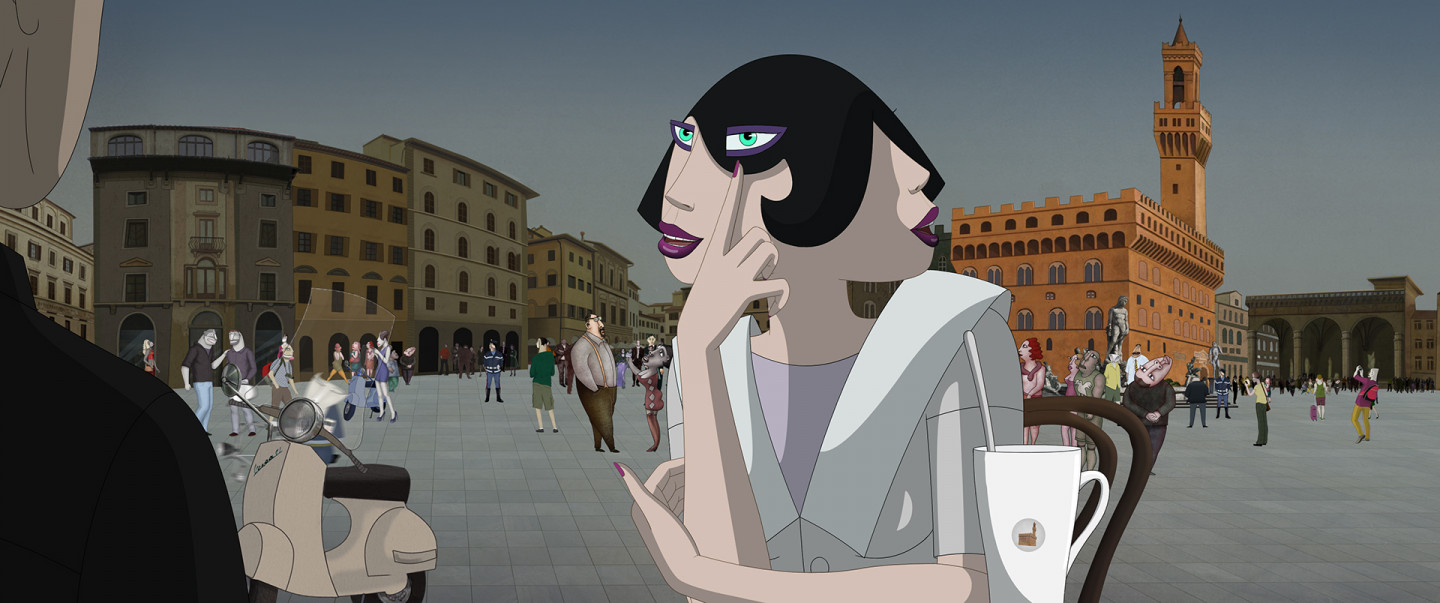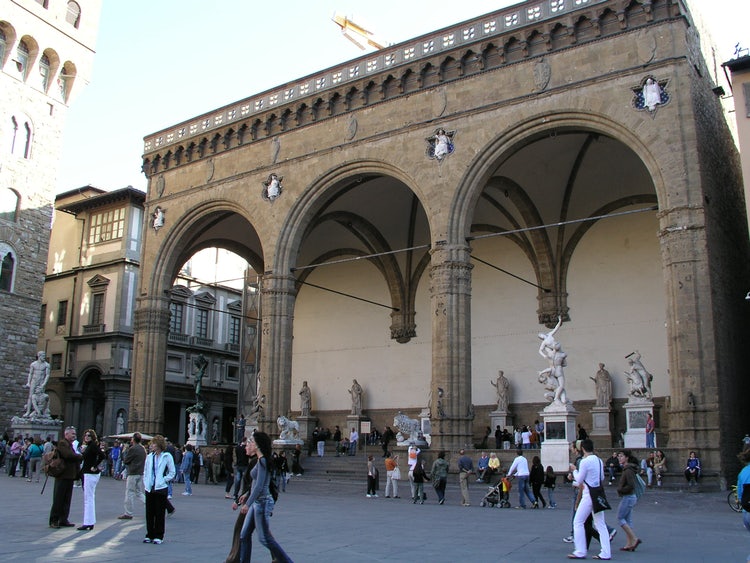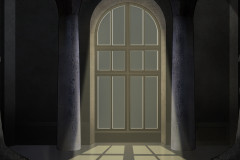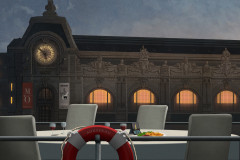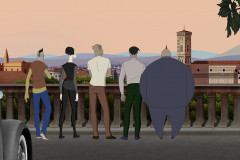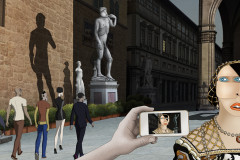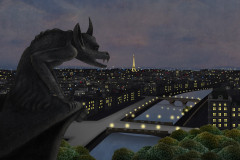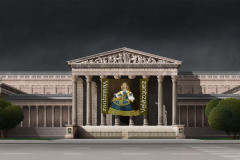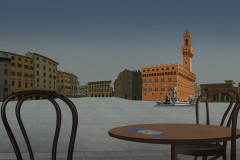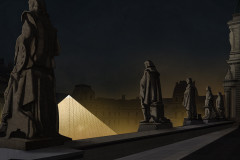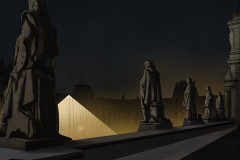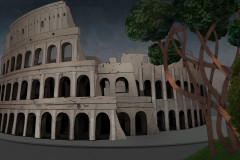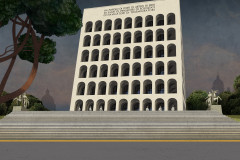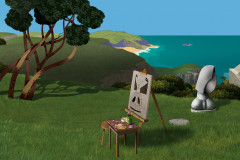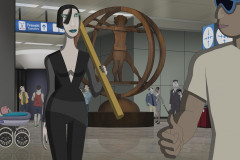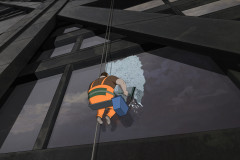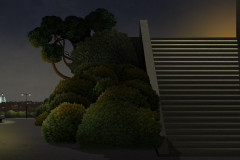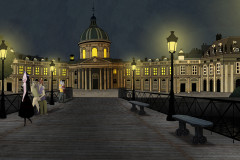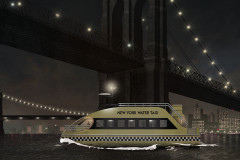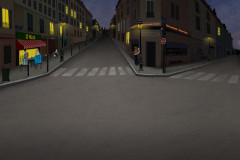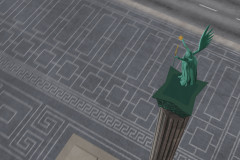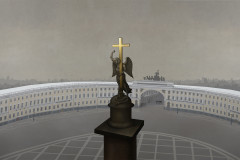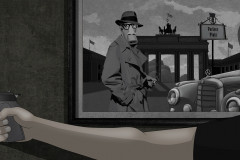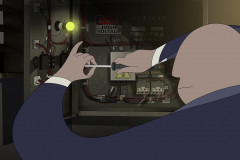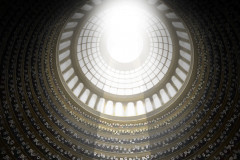A híres firenzei boltívek híres szobrokat őriznek. A Piazza della Signoria sarkán lévő építmény árkádjait korinthoszi fejezetű pilaszterek tartanak. Építését a 14. század végére tehetjük, ma pedig amolyan open air galériaként antik és reneszánsz kori szobroknak ad teret. A Loggia dei Lanzi német Lándzsások katonai rendjéről kapta a nevét, akik itt teljesítettek szolgálatot I. Cosimo nagyherceg uralkodása idején. A tetőzetet később, az Uffizi megépítésekor átalakították terasszá, hogy a Mediciek innen nézhessék a Piazza della Signoria-n rendezett eseményeket.
Az árkádok között megtaláljuk Cellini bronz Perszeuszát, amint a levágott Medúsza-fejet emeli magasba. a szörnyet legyőző hős alakja. Talán Cosimo de’Medici Elöl, középen látható a szobor, emelvényre helyezték, hogy mindenkinek egyből szemet szúrjon nagyherceg ellenfeleinek szólt a fenyegetés. Cellini majdnem 10 évig dolgozott Perszeusz alakján. A firenzeiek úgy látszik, szeretik a levágott fejeket: Perszeusz alakja mellett nagyon népszerű volt művészeti ábrázolásokon Dávid vagy Judith alakja is. Mindhárman az eszüket használva győzték le ellenfelüket, nem pedig erővel, és mindegyik story fejlevágással ér véget.
Giambologna A szabin nő elrablása című szoborcsoportja csavarodó kompozíciót mutat. Ez a manierizmus által kedvelt figura serpentina, vagyis felfelé spirálisan tekeredő elrendezés minden oldalról izgalmas nézetet ad a szobornak. A legnagyobb fehér márvány tömbből készült, amit valaha Toszkánába hozattak.
Loggia dei Lanzi
The famous arches of Florence house equally famous sculptures. Standing on the corner of Piazza della Signoria, this architectural structure is supported by pilasters with Corinthian capitals. Built toward the end of the 14th century, it now serves as an open-air gallery for antique and Renaissance sculptures. The Loggia dei Lanzi takes its name from the German Landsknechte (mercenary pikemen), who were stationed here during the rule of Grand Duke Cosimo I. Later, during the construction of the Uffizi, the loggia’s roof was transformed into a terrace, allowing the Medici family to watch public events in the square from above.
Beneath the arches stands Cellini’s bronze Perseus, heroically holding up the severed head of Medusa—a vivid reminder of triumph over monstrosity. The statue, positioned prominently on a pedestal, was likely intended as a clear message to Cosimo de’ Medici’s rivals. Cellini worked on the sculpture for nearly ten years. Interestingly, Florentines seem to have a fascination with beheadings in art: Perseus, David, and Judith were all popular subjects, each overcoming their enemy not through brute strength but through cunning—and each story ends with a decapitation.
Another highlight is Giambologna’s The Rape of the Sabine Women, a masterpiece of twisting, upward-spiraling composition known as figura serpentinata, a hallmark of Mannerist sculpture. The dynamic movement invites viewers to walk around the sculpture, offering a different perspective from every angle. It was carved from the largest single block of white marble ever transported to Tuscany.






